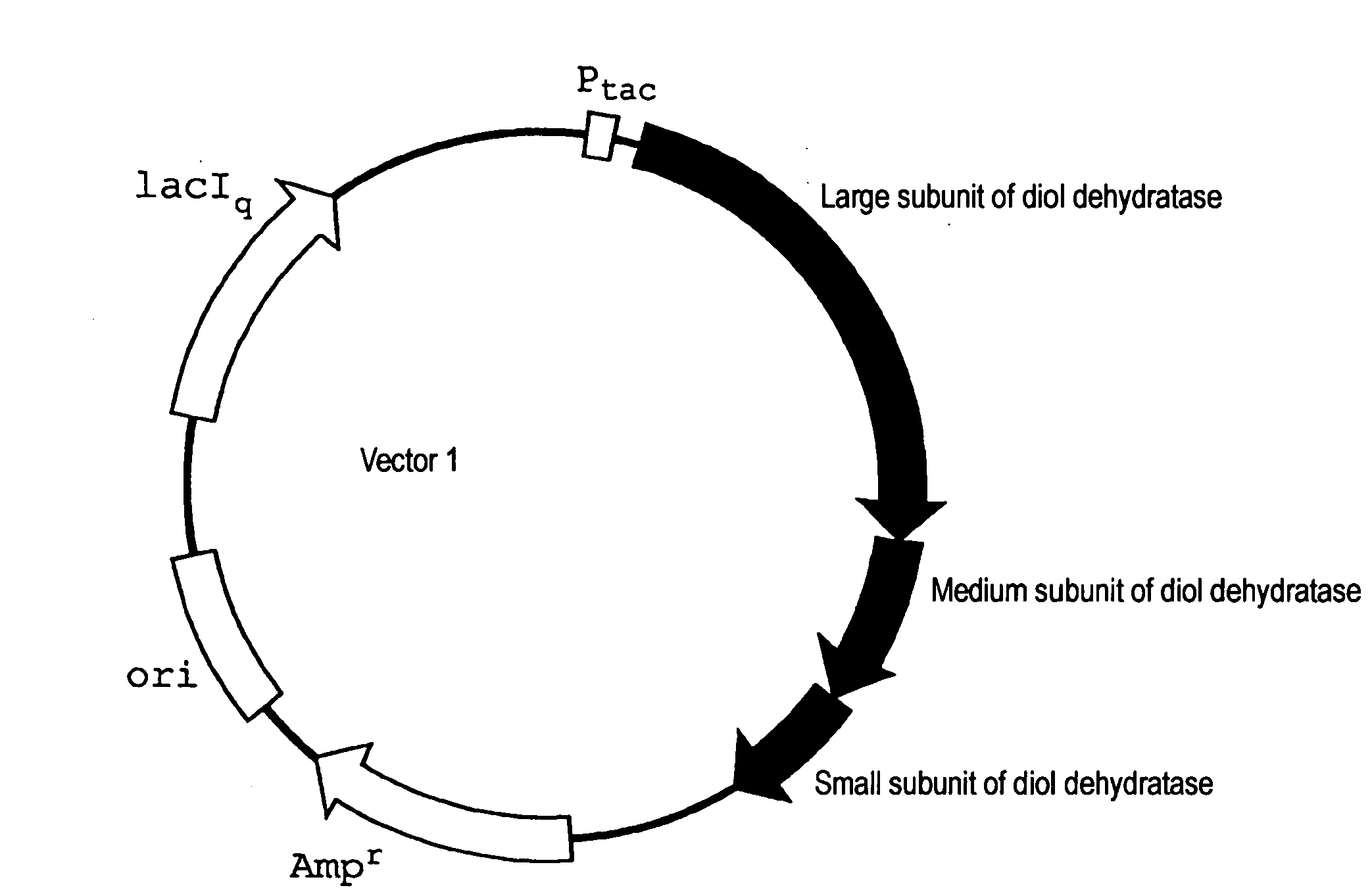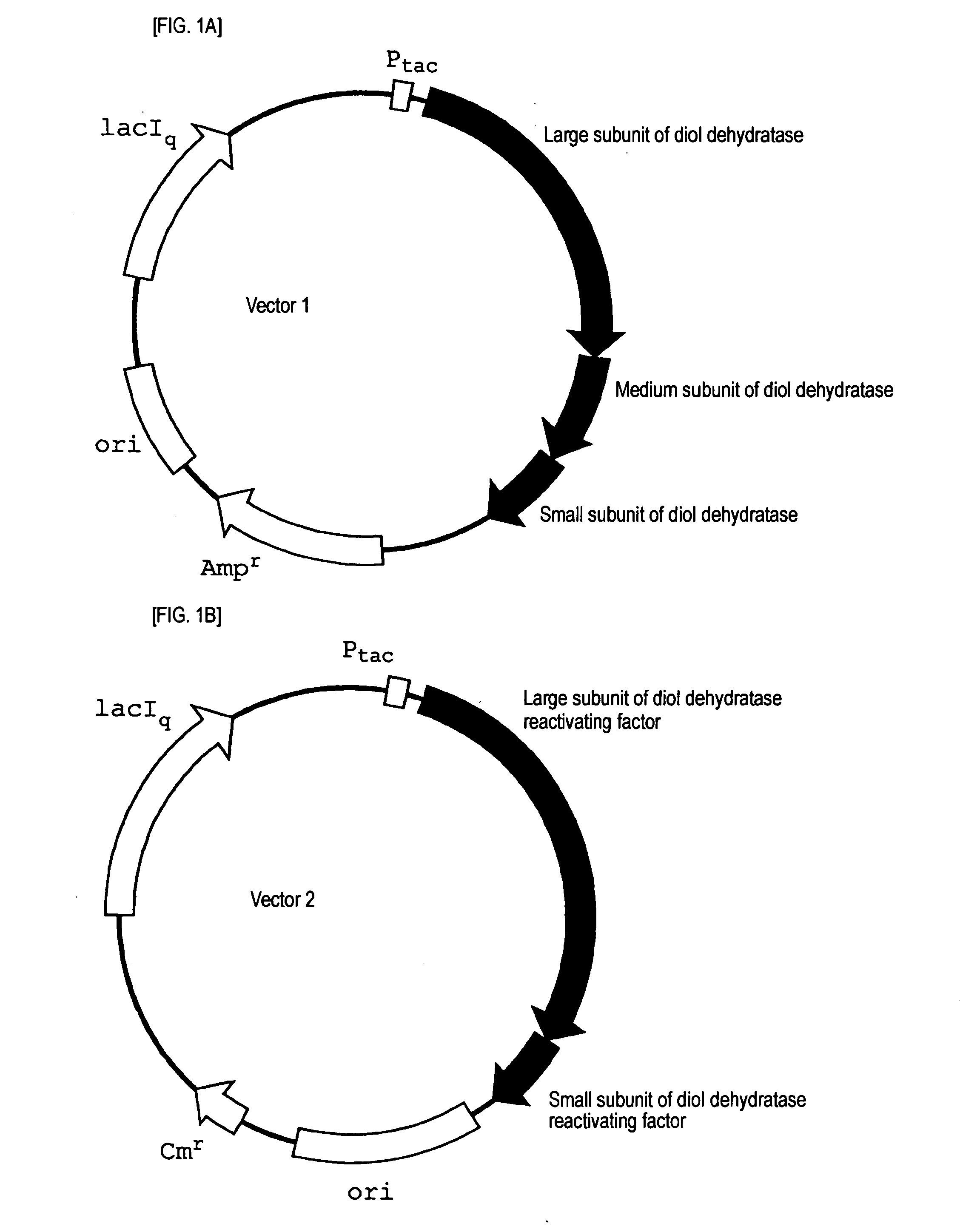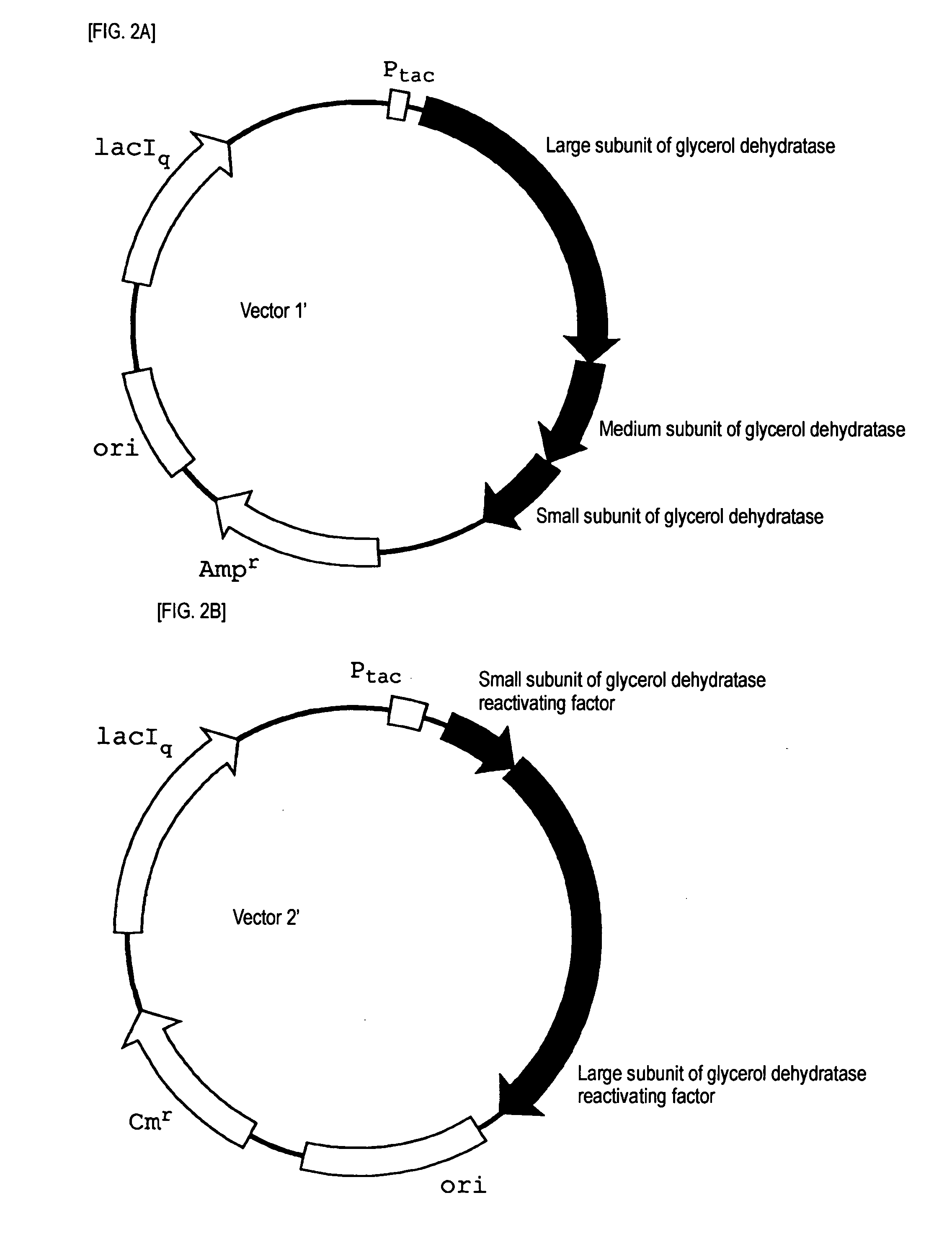Method For Producing 3-Hydroxypropionaldehyde
a technology of 3-hydroxypropionaldehyde and 3-hydroxypropionaldehyde, which is applied in the field of producing 3-hydroxypropionaldehyde, can solve the problems of insufficient conversion ratio and selectivity of the method by chemical synthesis, unfavorable, and difficult to achieve a high conversion ratio, and achieve high conversion ratio and high yield
- Summary
- Abstract
- Description
- Claims
- Application Information
AI Technical Summary
Benefits of technology
Problems solved by technology
Method used
Image
Examples
example 1
[0063]A strain JM109 / vector 1 (DD) / vector 2 (DDR), which was obtained by transforming E. coli JM 109 as a host with vector 1 (FIG. 1A, SEQ ID NO: 1) obtained by inserting a gene coding for diol dehydratase of Klebsiella pneumoniae (ATCC 25955) into a plasmid having a replication origin (ori) derived from pBR322 and vector 2 (FIG. 1B, SEQ ID NO: 2) obtained by inserting a gene coding for diol dehydratase reactivating factor of Klebsiella pneumoniae (ATCC 25955) into a plasmid having a replication origin (ori) derived from p15A, was inoculated into a LB medium containing 50 μg / ml of ampicillin and 100 μg / ml of chloramphenicol, and cultured at 37° C. for 15 hours. The cultured liquid was inoculated into 200 ml of a LB medium containing 50 μg / ml of ampicillin and 100 μg / ml of chloramphenicol, and cultured with shaking at 37° C. When an absorbance at 660 nm reached 0.8 (OD=0.8) after initiation of the culture, IPTG was added so as to give a concentration of 1 mM, and cultured for further...
example 2
[0065]A strain JM109 / vector 1′ (GD) / vector 2′ (GDR), which was obtained by transforming E. coli JM 109 as a host with vector 1′ (FIG. 2A, SEQ ID NO: 3) obtained by inserting a gene coding for glycerol dehydratase of Klebsiella pneumoniae (ATCC 25955) into a plasmid having replication origin (ori) derived from pBR322 and vector 2′ (FIG. 2B, SEQ ID NO: 4) obtained by inserting a gene coding for glycerol dehydratase reactivating factor of Klebsiella pneumoniae (ATCC 25955) into a plasmid having replication origin (ori) derived from p15A, was inoculated into a LB medium containing 50 μg / ml of ampicillin and 100 μg / ml of chloramphenicol, and cultured at 37° C. for 15 hours. The cultured liquid was inoculated into 200 ml of a LB medium containing 50 μg / ml of ampicillin and 100 μg / ml of chloramphenicol, and cultured with shaking at 37° C. When an absorbance at 660 nm reached 0.8 (OD=0.8) after initiation of the culture, IPTG was added so as to give a concentration of 1 mM, and cultured for...
example 3
[0067]In the same manner as in Example 2, 0.196 M of 3-hydroxypropionaldehyde (conversion ratio of glycerin: 98%) was produced. The reaction mixture containing the same was adjusted to pH 2 with 35% hydrochloric acid, and allowed to stand at room temperature for 1 hour. The acrolein formed in the reaction mixture was quantitatively determined, to find that 0.130 M of acrolein was formed.
PUM
| Property | Measurement | Unit |
|---|---|---|
| Ratio | aaaaa | aaaaa |
Abstract
Description
Claims
Application Information
 Login to View More
Login to View More - R&D
- Intellectual Property
- Life Sciences
- Materials
- Tech Scout
- Unparalleled Data Quality
- Higher Quality Content
- 60% Fewer Hallucinations
Browse by: Latest US Patents, China's latest patents, Technical Efficacy Thesaurus, Application Domain, Technology Topic, Popular Technical Reports.
© 2025 PatSnap. All rights reserved.Legal|Privacy policy|Modern Slavery Act Transparency Statement|Sitemap|About US| Contact US: help@patsnap.com



